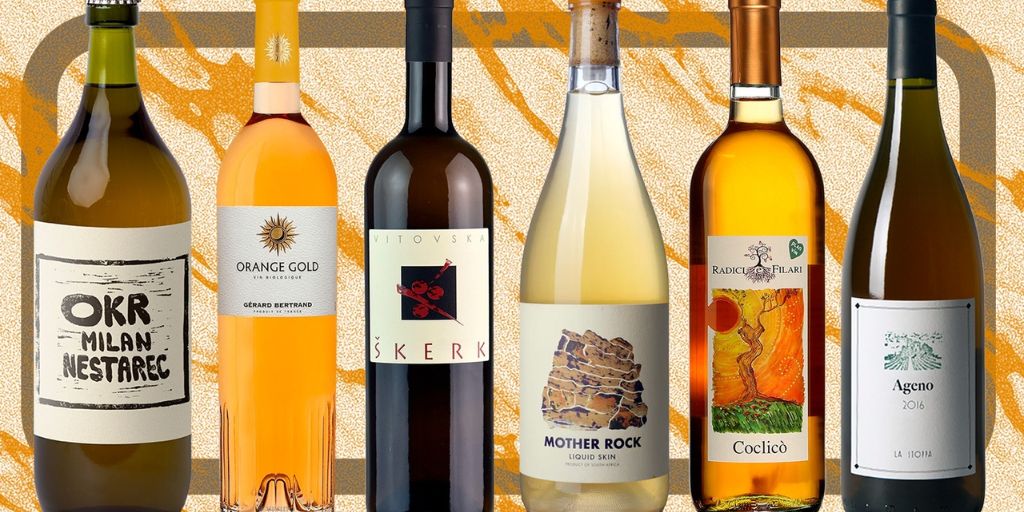Wine lovers are always on the lookout for new flavors, textures, and experiences. One style that’s caught the attention of both sommeliers and casual drinkers alike is orange wine.
No, it’s not made from oranges—and it’s not just rosé with a twist. Orange wine is a centuries-old style with bold flavors, natural winemaking roots, and a striking amber hue that makes it a standout both visually and on the palate.
But what exactly is orange wine? Where does it come from, how is it made, and what should you expect when tasting it? This article will demystify orange wine and help you decide if it’s your next favorite bottle.
What Exactly Is Orange Wine?
Orange wine is a white wine made using red wine techniques. In other words, it’s made from white grapes, but instead of removing the grape skins before fermentation (as is standard in white wine production), the skins are left on during fermentation—just like with red wines.
This extended skin contact gives the wine:
-
Its distinctive amber to copper color
-
Tannins, which are usually absent from white wines
-
A bold, textured mouthfeel
-
Unique aromatic and flavor profiles
Because of the color, orange wine is often grouped with red and rosé wines, but technically, it’s a white wine—just made differently.
A Quick Look at How Orange Wine Is Made
To understand orange wine, it helps to compare how white, red, and orange wines are produced.
Typical White Wine:
-
Grapes are crushed
-
Skins and seeds are immediately removed
-
Juice is fermented without skins
Red Wine:
-
Grapes are crushed
-
Skins and seeds remain with juice during fermentation
-
Skins add color, tannins, and structure
Orange Wine:
-
Made from white grapes
-
Skins are left in contact with juice during fermentation
-
Fermentation lasts days, weeks, or even months with skins
This ancient method results in a wine that has the acidity of a white but the texture and grip of a red, often leading to flavors that are nutty, spicy, herbal, and slightly oxidative.
Where Did Orange Wine Originate?
Though orange wine has gained popularity in modern wine bars and natural wine circles, the technique is anything but new. Its origins trace back thousands of years to the Caucasus region—specifically Georgia, where traditional winemakers still ferment and age wines in large clay vessels called qvevri, buried underground.
In the 20th century, the style saw a resurgence thanks to winemakers in Italy’s Friuli-Venezia Giulia region and Slovenia, who embraced skin-contact whites as a return to traditional methods. From there, the trend spread across Europe, the U.S., Australia, and beyond, especially within the natural wine movement.
What Does Orange Wine Taste Like?
Orange wine is a bold and unpredictable experience. Its taste depends on several factors: grape variety, region, winemaking method, and skin contact duration. However, some typical characteristics include:
Flavor Notes:
-
Dried fruit (apricots, oranges, figs)
-
Nuts (almonds, walnuts)
-
Spices (clove, cinnamon, tea leaf)
-
Herbal or floral aromas
-
Occasionally oxidative or savory notes
Texture:
-
A grippy mouthfeel similar to red wine
-
Noticeable tannins, which are rare in white wines
-
Often unfiltered, giving it a slightly cloudy appearance
Acidity:
-
Still crisp and fresh like a white wine
-
But balanced by the weight and depth from skin contact
This combination of weight, flavor, and structure makes orange wines incredibly food-friendly—more on that shortly.
How to Serve and Enjoy Orange Wine
Because orange wine sits between white and red in style, you can serve it similarly to either, depending on its weight and age.

Temperature:
-
Slightly chilled is ideal—around 50–55°F (10–13°C)
-
Too cold and you’ll mute the flavors; too warm and it may taste too oxidative
Glassware:
-
Use a white wine glass or universal glass with enough room to swirl
-
Larger bowls enhance aroma and soften the tannins
Decanting:
-
Some orange wines benefit from decanting, especially if they’re young, unfiltered, or high in tannins
-
A few minutes of air can open up more complex aromas
Shelf Life:
-
Orange wines can age beautifully due to their structure and oxidative notes
-
Open bottles may keep a bit longer than standard whites, especially if stored properly
What Foods Pair Well With Orange Wine?
One of orange wine’s biggest strengths is its versatility with food. Thanks to its bold flavors and tannic edge, it can hold its own with dishes that would overpower typical white wines.
Great Pairings:
-
Cheeses: Aged cheeses, blue cheese, or funky soft cheeses
-
Curry and spice: Indian, Moroccan, Thai dishes
-
Roasted vegetables: Squash, mushrooms, carrots, eggplant
-
Fermented or pickled foods: Kimchi, sauerkraut, miso-based dishes
-
Game or poultry: Duck, turkey, pork with herbs
Its complex flavor makes orange wine a great wildcard option for meals with mixed or eclectic flavors.
Is Orange Wine the Same as Natural Wine?
Not necessarily—but there’s often overlap. Many orange wines are made by natural winemakers, which means:
-
Minimal or no added sulfites
-
Native yeasts used for fermentation
-
Unfiltered and unfined
-
Organic or biodynamic vineyard practices
However, not all natural wines are orange, and not all orange wines are made naturally. You can find skin-contact whites made in both traditional and modern styles with varying levels of intervention.
Who Should Try Orange Wine?
Orange wine isn’t for everyone—but it offers a fresh and adventurous experience for certain wine drinkers.
You might love orange wine if:
-
You enjoy earthy, funky, or savory flavors
-
You like dry reds but want something chilled and lighter
-
You’re exploring natural, minimal-intervention wines
-
You want something different from the standard wine lineup
It might not be the best first wine for someone brand new to wine, but it’s ideal for those ready to expand their palate.
How to Shop for Orange Wine
More wine shops now carry orange wine, often labeled as:
-
“Skin-contact white”
-
“Amber wine”
-
Or simply in a special “natural” section
Look for producers in:
-
Georgia (e.g., Pheasant’s Tears, Gotsa)
-
Italy (Friuli) (e.g., Radikon, Gravner)
-
Slovenia (e.g., Movia)
-
California (e.g., Donkey & Goat, Field Recordings)
-
Australia (e.g., Lucy M, Jauma)
-
New York and Oregon also have some great offerings
Don’t hesitate to ask shop staff for a recommendation based on your taste preferences.
Conclusion
Orange wine is more than just a trend—it’s a revival of one of the oldest ways to make wine. With its unusual flavor, bold color, and gripping texture, it stands out in a crowded field of reds, whites, and rosés. Whether you’re an adventurous sipper or a curious food lover, orange wine offers a new way to experience what wine can be.
So next time you’re browsing wine shelves or ordering a bottle at a restaurant, consider giving orange wine a try. You might just discover your next favorite style hiding in plain amber.


